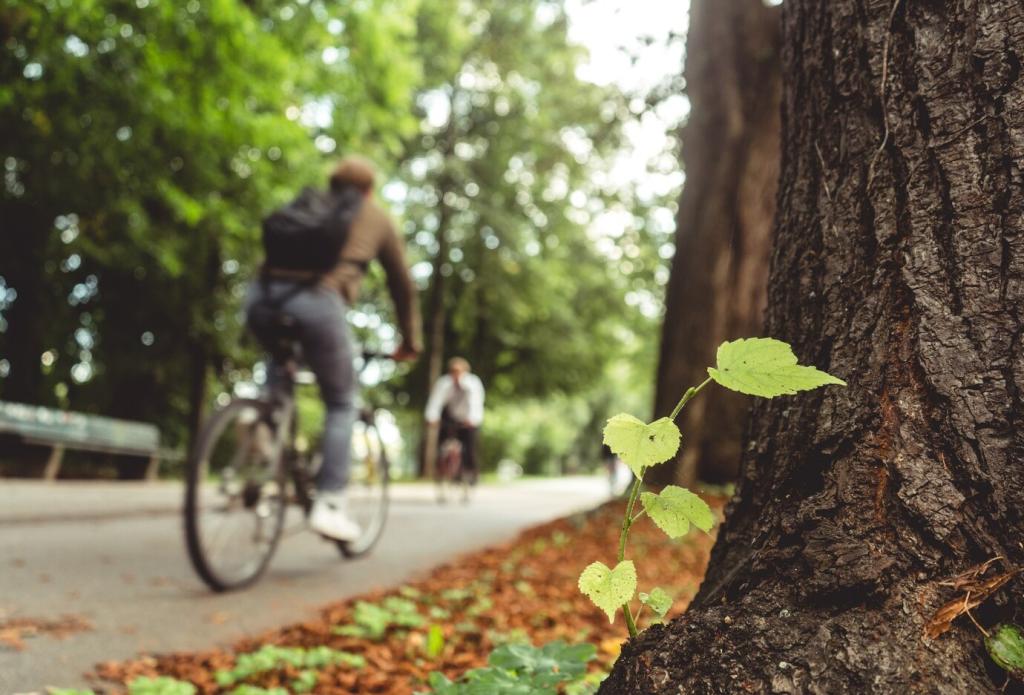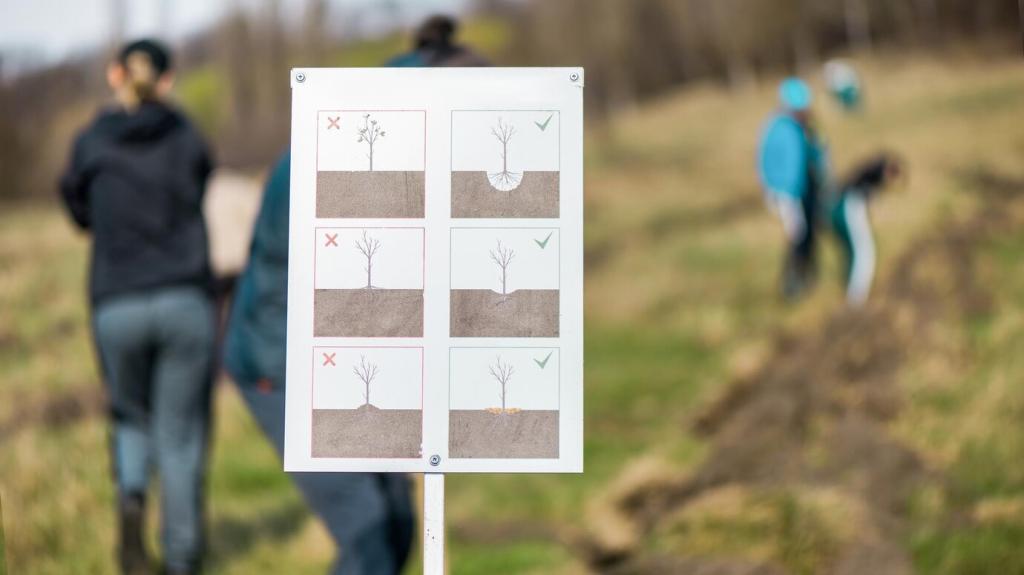Greening Cities: Sustainable Landscaping for Urban Biodiversity
Chosen theme: Sustainable Landscaping for Urban Biodiversity. Welcome to a hopeful, hands-on guide for transforming hard edges and empty patches into living networks that cool streets, invite pollinators, and reconnect people with the nature right outside their doors.

When flowers feed bees, bees help gardens, and gardens help neighborhoods. More native blooms mean better pollination for urban food plots, fewer heat islands, and calmer, greener blocks. Tell us what you’ve noticed on your street, and subscribe to follow our monthly before-and-after habitat stories.

Designing with Natives and Structure
Begin with a canopy or columnar tree where space allows, add fruiting shrubs, then understory perennials that bloom in succession. Keep winter seedheads for birds. Comment with your ZIP code, and we’ll share a seasonal bloom chart to keep wildlife fed month after month.


Designing with Natives and Structure
Compact roots for narrow beds, salt-tolerant species near streets, drought-tough grasses for sunny façades, and shade lovers under eaves. Share your site constraints below. We’ll feature reader gardens and send you a free quick guide to match native plants to real-world urban stress.
Rain Gardens and Bioswales that Actually Work
Size your rain garden by roof area, dig a shallow basin, and layer compost with native wet-tolerant plants. Water infiltrates, pollutants filter, and dragonflies hunt above the surface. Tell us your roof size, and we’ll help estimate basin volume in a future subscriber-only walkthrough.
Permeable Surfaces, Cooler Streets
Swap solid concrete for permeable pavers or gravel bands that let water sink into living soil. Shade with small-canopy trees to reduce radiant heat. Share your paving challenges and we’ll crowdsource solutions, from curb cuts to planter lips, in our next newsletter issue.
Weekend Challenge: Capture the First Inch
Add a barrel to downspouts, mulch bare ground, and edge beds to hold the first inch of rain. Track runoff changes with a simple jar test. Post your results and photos, and we’ll feature standout projects in our community update—subscribe to see your garden highlighted.
Soil as a Living Foundation
Compost, Mulch, and Microbes
Feed soil with leaf mold, compost, and untreated wood chips to boost structure and moisture retention. Mycorrhizal fungi expand root reach and nutrient uptake. Tell us your favorite mulch sources, and subscribe for our seasonal soil calendar with easy monthly tasks you can actually keep.
Navigating Urban Contaminants Safely
Older lots can hold lead or other contaminants. Test soil, use raised beds for edibles, and plant deep-rooted natives to stabilize dust. Ask questions anonymously if you prefer; we’ll compile expert answers and email a practical, step-by-step remediation checklist to subscribers.
Your Soil Story Matters
A reader once salvaged tired, compacted soil with autumn leaves and quiet patience. By spring, earthworms returned and asters thrived. Share your small wins, and we’ll map them to show how tiny patches connect across the city—add your garden to our community mosaic.
Habitats in Small and Surprising Spaces
Vertical Greening and Nesting Nooks
Use trellises, pocket planters, and railing boxes with native vines and grasses. Add twig bundles, hollow stems, and fallen leaves tucked safely as shelter. Post a photo of your smallest habitat, and subscribe to get our vertical planting blueprints and weight-safe rooftop tips.
Lighting That Respects the Night
Swap bright, blue-white bulbs for warm, shielded, motion-activated lights to protect moths, bats, and migrating birds. Darkness is habitat too. Tell us what fixtures you use, and we’ll publish a reader-tested list of wildlife-friendly lighting options next month.
Quick Win: A Dish of Water
Set a shallow dish with pebbles for pollinators and birds, changing water often to prevent mosquitoes. One reader’s fourth-floor balcony became a regular stop for goldfinches within a week. Try it, then comment with your sightings so we can celebrate your first visitors together.
Stitching a Citywide Pollinator Pathway
Mark blocks on a simple map, pick seasonal bloom goals, and coordinate three core species everyone plants. Even five homes per block make a difference. Join the comments to find corridor buddies nearby, and subscribe for our starter kit with signs and outreach scripts.
Working with Landlords and City Agencies
Bring data: heat maps, stormwater savings, and before-after photos. Offer low-maintenance plant lists and clear watering plans. Share your success or roadblocks; we’ll assemble letter templates and policy one-pagers, then email them to subscribers to help you win approvals faster.
Host a Sidewalk Planting Day
Gather mulch, natives, and a hose. Invite kids to label species and count insects. Snap baseline photos and repeat a month later. Post your results, and we’ll feature your corridor in our community showcase—sign up to receive the event checklist and printable tags.


Scout leaves weekly, spot-treat with soapy water, and welcome lady beetles by keeping pesticide use near zero. Tolerate a nibble; it feeds the web of life. Comment with your pest puzzles, and subscribe for our seasonal IPM guide tailored to compact urban sites.

Choose hand tools or battery-powered equipment, leave some leaf litter for overwintering species, and cut stems in spring when insects emerge. If you’ve switched tools, tell us what changed. We’ll compile a reader-tested toolkit and email the shortlist to subscribers.

Set a recurring date to photograph blooms, count pollinators for ten minutes, and note soil moisture. Tiny habits reveal big trends. Share your logs and get invited to our quarterly virtual share-out, where readers trade tips and celebrate habitat milestones together.
